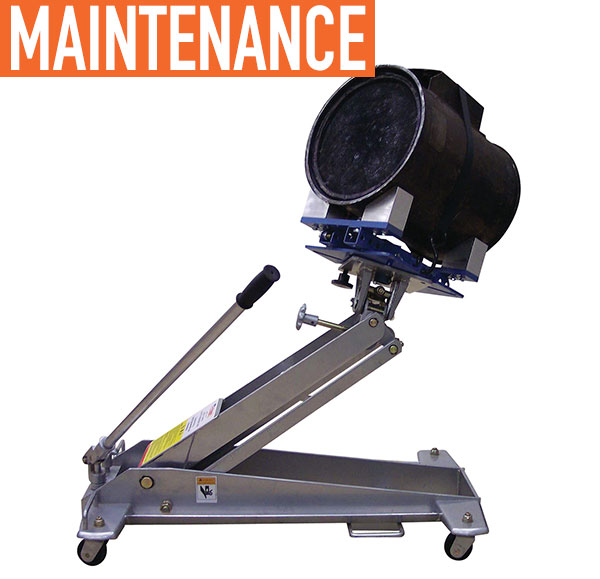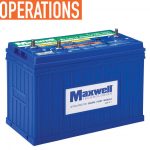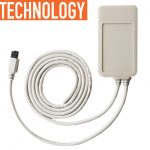In order to meet federal diesel emissions standards established in 2007, all diesel trucks are required to be equipped with a Diesel Particulate Filter (DPF), which cuts down on emissions of particulate matter that come out of the diesel engine exhaust pipe. For fleet owners and technicians, it is important to understand the proper use, maintenance, and cleaning procedures for DPFs in order to increase efficiency and save time and money.
THE BREAKDOWN
DPFs help to convert soot into diesel particulate matter and restrict the excess matter from flowing out into the air. This process, called filter regeneration, occurs when DPFs rise to temperatures as hot as 1,100 degrees Fahrenheit in order for the soot to burn. As a result of the regeneration process, ash remains permanently in the DPF and over time, this ash buildup reduces the soot handling capability of the filter. To compensate for this reduced capability, the DPF must complete more frequent regenerations in order to maintain exhaust flow and fuel economy for the vehicle. To combat the ash buildup, it is imperative to clean out the ash at a regular interval established by the vehicle manufacturer.

OTC 5281 Thermal Processing Unit converts soot into ash, making DPF cleaning more effective.
Failure to clean and maintain DPFs can result in a host of issues, such as:
Backpressure: Backpressure caused by diesel particulate matter accumulation in the DPF can ultimately result in engine failure.
Irreversible Damage: Irreversible damage, such as a crack, can be caused by unchecked overheating in the DPF and cannot be repaired. This results in the purchase of an emergency replacement DPF, which can cost upwards of $5,000.
Regular cleaning of a DPF is essential to avoid issues and complications that can result from improper maintenance. Investing in a DPF cleaner is a cost-effective solution and there are many different options of cleaners to suit the specific needs of each shop.

Featured Image: OTC DPF holder to make removing and transporting soiled filters easier and cleaner.
Above: OTC 5280 DPF Cleaner for high-volume DPF service.
DIFFERENCES IN CLEANERS
When choosing which DPF cleaner unit to purchase, it’s important to consider what features best fit the needs of a fleet or a shop. One of the major differentiators between different types of DPF cleaners is whether the unit is stationary or portable.
For a shop owner that manages numerous vehicles, a stationary DPF unit would be a valuable investment. Stationary DPF units are designed to accommodate large vehicle volumes and are built to last for long periods of time. For shop owners who may consider a stationary DPF unit, adapter compatibility is an important concern throughout the selection process.
Offering extensive compatibility options, OTC’s patented pulse cleaning 5280 DPF Cleaner has a large variety of optional adapter kits, including Caterpillar, Cummins, Hino, and Isuzu, among others. To help improve technician confidence, the OTC 5280 includes a user manual, which features all-encompassing operating procedure instructions.

OTC portable DPF cleaner.
Smaller shops that require more versatility in a DPF cleaner may consider a portable unit as the ideal choice to take out into the field or utilize around the shop. OTC’s cutting edge 5286 DPF Cleaner is lightweight and cleans 20 percent more efficiently than competitive cleaners. Its optimized Air Knife design rotates air in a spiral pattern, indexing on each rotation for a more thorough cleaning. Both the 5280 and 5286 by OTC are fit for automated operation, requiring little to no monitoring.
In some situations, a DPF cleaner alone may not be effective if the proper regeneration isn’t occurring and the truck is experiencing performance issues. Thermal regeneration offers a solution to maximize efficiency of a DPF cleaning unit. Used in conjunction with a DPF Cleaner, a DPF Thermal Processing Unit has the capability to thermally regenerate a DPF at a controlled, pre-programmed rate to protect DPF from thermal shock and reduce the risk of DPF cracking. The OTC 5281 DPF Thermal Processing Unit offers fleet owners and technicians the capabilities to thermally regenerate their DPFs with a large chamber that can accommodate various DPF sizes and shapes.
MAINTENANCE, CLEANING
For drivers and technicians alike, here are a few tips for maintaining and cleaning a DPF:
- DPFs are designed to run for 200,000 to 500,000 miles or more without cleaning, as long as operating conditions are ideal (including usage of Ultra Low Sulfur Diesel and CJ-4 Low Ash Oil, high on-truck passive regeneration activity, and properly working turbo and EGR systems).
- Drivers should be cognizant of their DPF service light and call for roadside assistance immediately if it becomes illuminated to avoid irreversible damage to the DPF.
- Use the drop rod method to measure the depth of ash before and after to check for cleanliness.
- Always clean the DPF at fixed intervals depending on the vehicle’s duty-cycle. If more information is needed regarding how often a DPF should be serviced, vehicle manufacturers should be contacted for recommendations.
At the end of the day, it’s just the best practice to clean and maintain DPFs.
FOR MORE INFORMATION:
Find out more about DPF cleaners and related products and services, visit www.bosch.com.
_______________________________________________________________________
MODERN WORKTRUCK SOLUTIONS: JULY 2016 ISSUE
Did you enjoy this article?
Subscribe to the FREE Digital Edition of Modern WorkTruck Solutions magazine.
![]()




